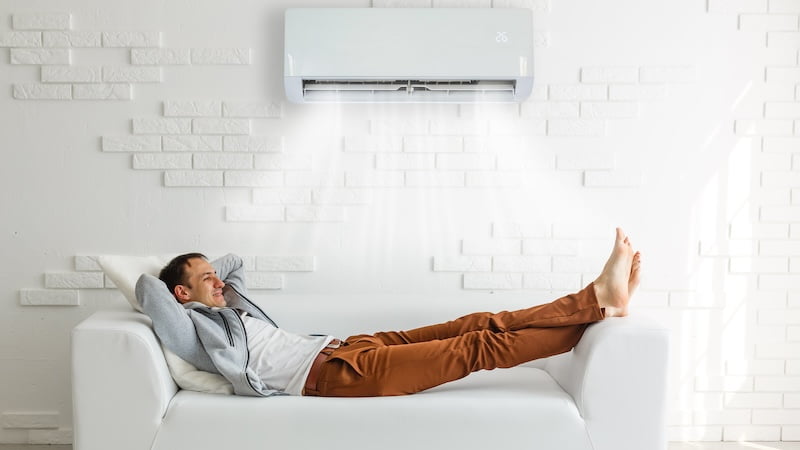
Temperatures are rising in many places and heat waves are becoming more frequent. Air conditioning is therefore becoming increasingly popular. It offers cooling on hot days and can significantly improve the quality of life. But how does an air conditioning system actually work?
Air conditioning systems were rather unusual in Germany for a long time. But with rising temperatures and increasing heat waves, fans are often no longer sufficient. More and more people are therefore equipping their homes with appropriate cooling devices. The advantages are obvious: a pleasantly cool home, better sleep quality and a place to retreat to on hot days.
How does an air conditioning system actually work?
From a physical point of view, an air conditioner works in a similar way to a refrigerator. Both devices transport heat energy from a place with a lower temperature to a place with a higher temperature. However, heat only moves in the direction of the lower temperature. This is why a coolant is required that flows through a closed circuit of tubes and cools down the warm air in the room.
This process requires various components: a compressor, a condenser, an expansion valve and an evaporator. They are part of a circuit that runs through several stations. Together they ensure that the air is cooled.
These four steps cool down the room air
In the first step, the compressor compresses the coolant. To do this, it sucks it in as a gas. It then presses it into the condenser. There, the still warm coolant is cooled down with the help of outside air.
The waste heat is released into the colder air in the immediate vicinity. Meanwhile, the temperature of the coolant drops and it begins to condense. In the process, it changes its form from gaseous to liquid.
A specially designed line then transfers the liquid coolant via the expansion valve into the evaporator. There it evaporates with the help of the ambient heat (room temperature). To make this work, a fan sucks in the warm interior air and directs it through the evaporator. In return, the cooled air is blown directly into the room.
This cycle repeats itself until the desired temperature is reached in the room. Air conditioning systems therefore work on the principle of a heat pump. However, the process is reversed: instead of heating rooms, they are cooled.
Air conditioners can also humidify air
However, many air conditioning systems can not only lower the temperature of a room, but also regulate the humidity inside. The reason: When the temperature inside the building cools down, the humidity also decreases.
This is because cool air can store less water vapor than warm air. Water vapor from the air condenses into water droplets on the surface of the pipes through which the coolant flows. This condensation is collected and directed outside.
Also interesting:
Source: https://www.basicthinking.de/blog/2024/08/17/wie-funktioniert-eigentlich-eine-klimaanlage/


